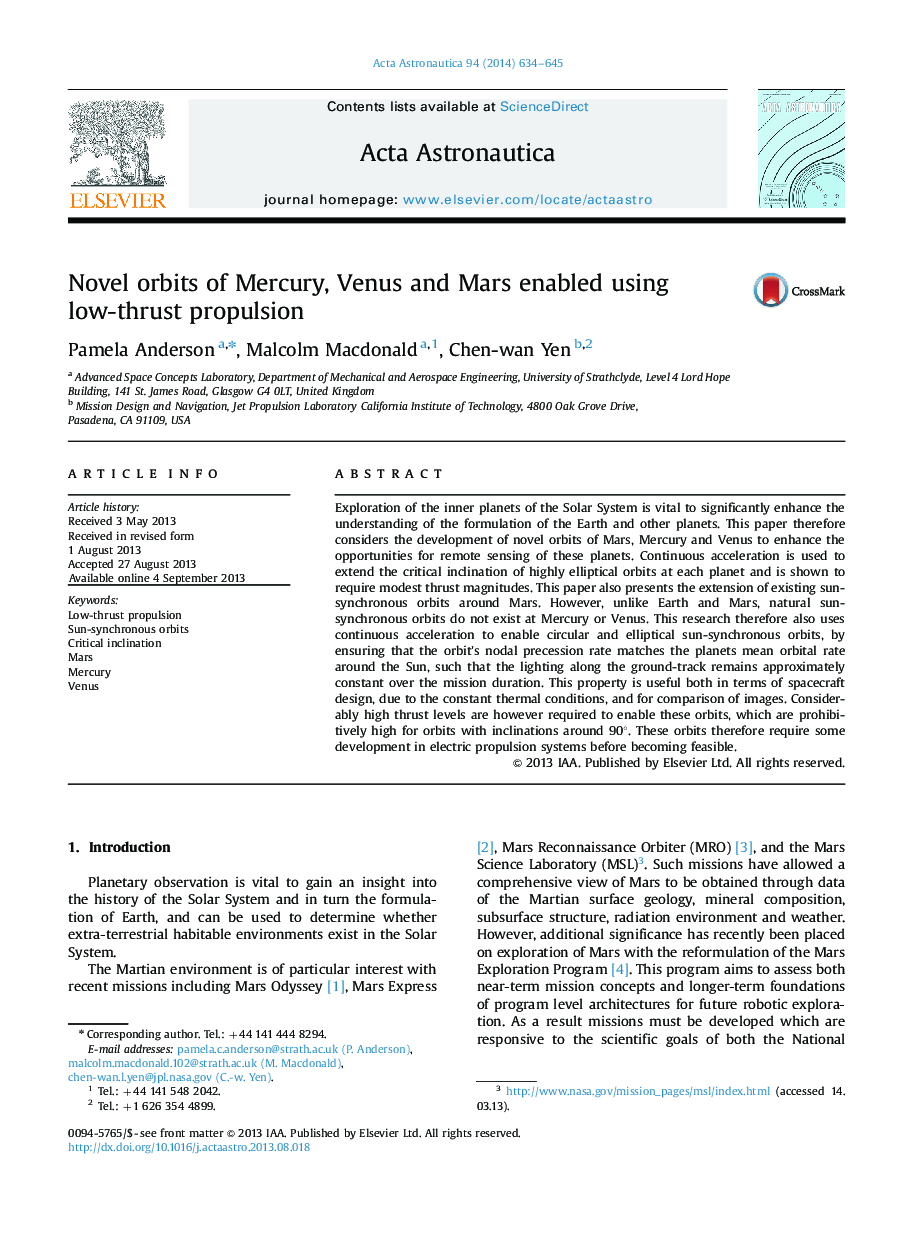| Article ID | Journal | Published Year | Pages | File Type |
|---|---|---|---|---|
| 1714771 | Acta Astronautica | 2014 | 12 Pages |
•Low-thrust propulsion is used to derive novel orbits at Mars, Mercury and Venus.•Continuous acceleration is used to extend the critical inclination of orbits at each body.•Sun-synchronous orbits are extended at Mars and enabled at Mercury and Venus.•Newly proposed orbits could significantly enhance the opportunities for observation.
Exploration of the inner planets of the Solar System is vital to significantly enhance the understanding of the formulation of the Earth and other planets. This paper therefore considers the development of novel orbits of Mars, Mercury and Venus to enhance the opportunities for remote sensing of these planets. Continuous acceleration is used to extend the critical inclination of highly elliptical orbits at each planet and is shown to require modest thrust magnitudes. This paper also presents the extension of existing sun-synchronous orbits around Mars. However, unlike Earth and Mars, natural sun-synchronous orbits do not exist at Mercury or Venus. This research therefore also uses continuous acceleration to enable circular and elliptical sun-synchronous orbits, by ensuring that the orbit's nodal precession rate matches the planets mean orbital rate around the Sun, such that the lighting along the ground-track remains approximately constant over the mission duration. This property is useful both in terms of spacecraft design, due to the constant thermal conditions, and for comparison of images. Considerably high thrust levels are however required to enable these orbits, which are prohibitively high for orbits with inclinations around 90°. These orbits therefore require some development in electric propulsion systems before becoming feasible.
